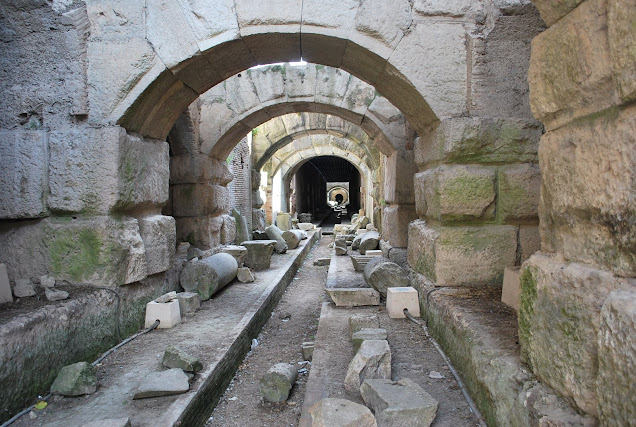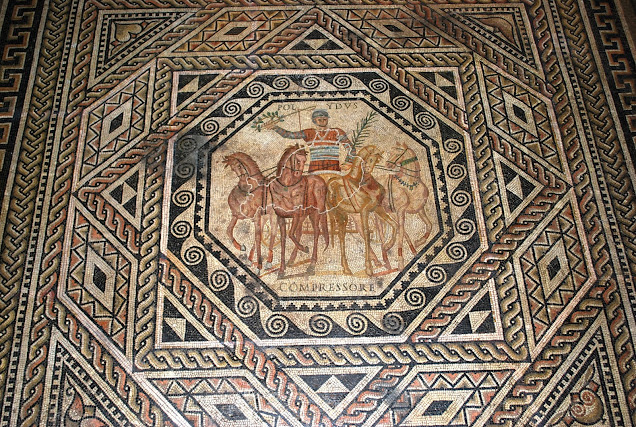In search for gladiators at Capua
The amphitheater of Capua, or modern Santa Maria Capua Vetere, was built in the 1st century AD under Augustus and restored by Hadrian and Antoninus Pius. It is a direct copy of the Colosseum in Rome. Its superstructure has suffered much in the course of time and much of the seating and the vaulting upon which it rested are now missing. It is unbelievable that the estimated seating capacity was 47,426!
Yet, its subterranean structures remain well preserved and, while they were the first I had seen like this, made a great impression. Only the substructures in Puteoli can rival the ones in Capua.
The subterranean structures of the amphitheater bear a striking resemblance, in their layout, organizational principles, plan and building materials, to those of the Colosseum. However, at Capua there are many more transverse galleries parallel to the minor axis of the arena than in the Colosseum, where only a single centrale crossway existed. Once again one sees the architect's essentially futile attempt to insert a square peg into a round hole.
A series of sculpted keystone bosses adorned the arches of the facade arced. These keystones bore detailed sculpted busts of deities, e.g., Mithras, Juno, Isis, Diana, Demeter, Jupiter, Volturnus, Mercury and Minerva. The artistic origins of such a decorative scheme seems almost certainly Etruscan. This fact is entirely consistent with the local history of Capua, once the chief center of Etruscan Compania. Originally such decoration was probably intended to lend supernatural protection to the city gates, the most vulnerable points in the circuit of walls surrounding a settlement. Also, perhaps, these heads were designed to ward off evil influences that might enter the city through its portals.
Interested in more pictures of Capua? Click here!
For more, detailed information, read 'The Story of the Roman Amphitheatre' by D.L. Bomgardner.







Reacties
Een reactie posten